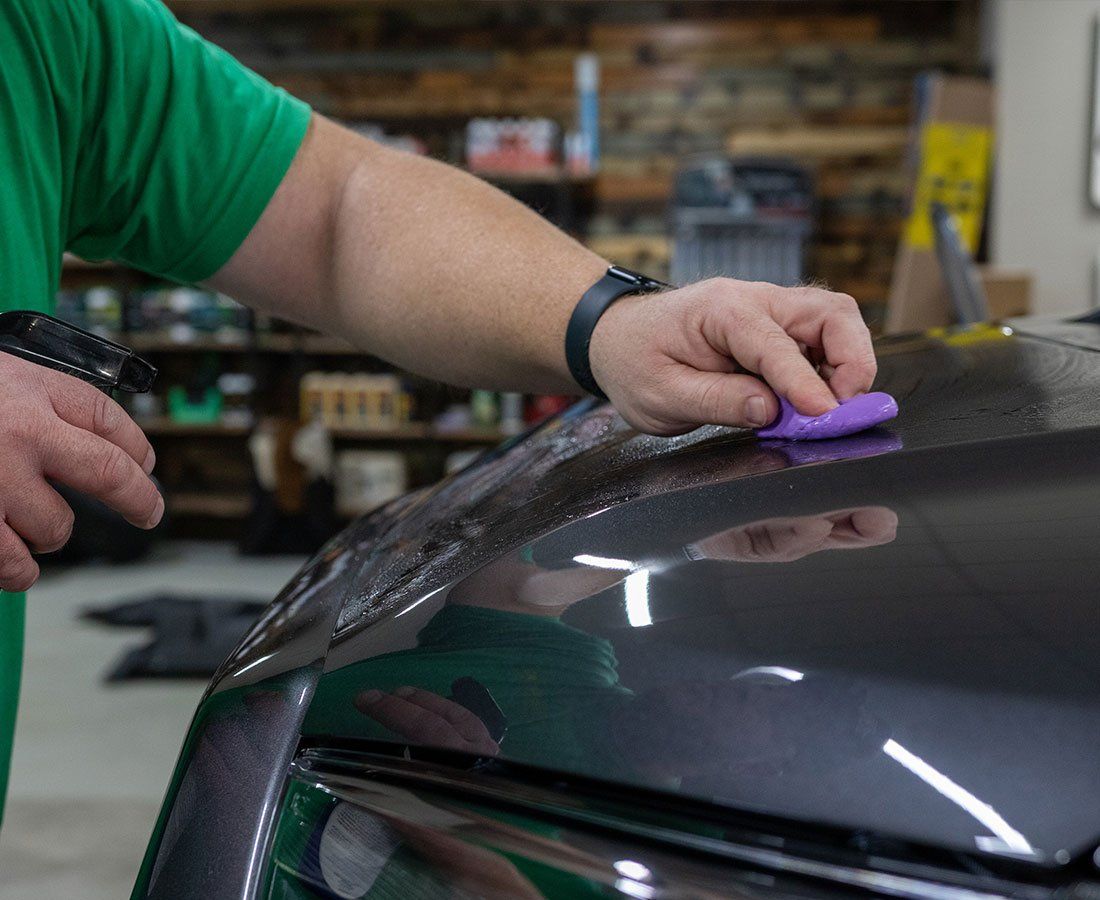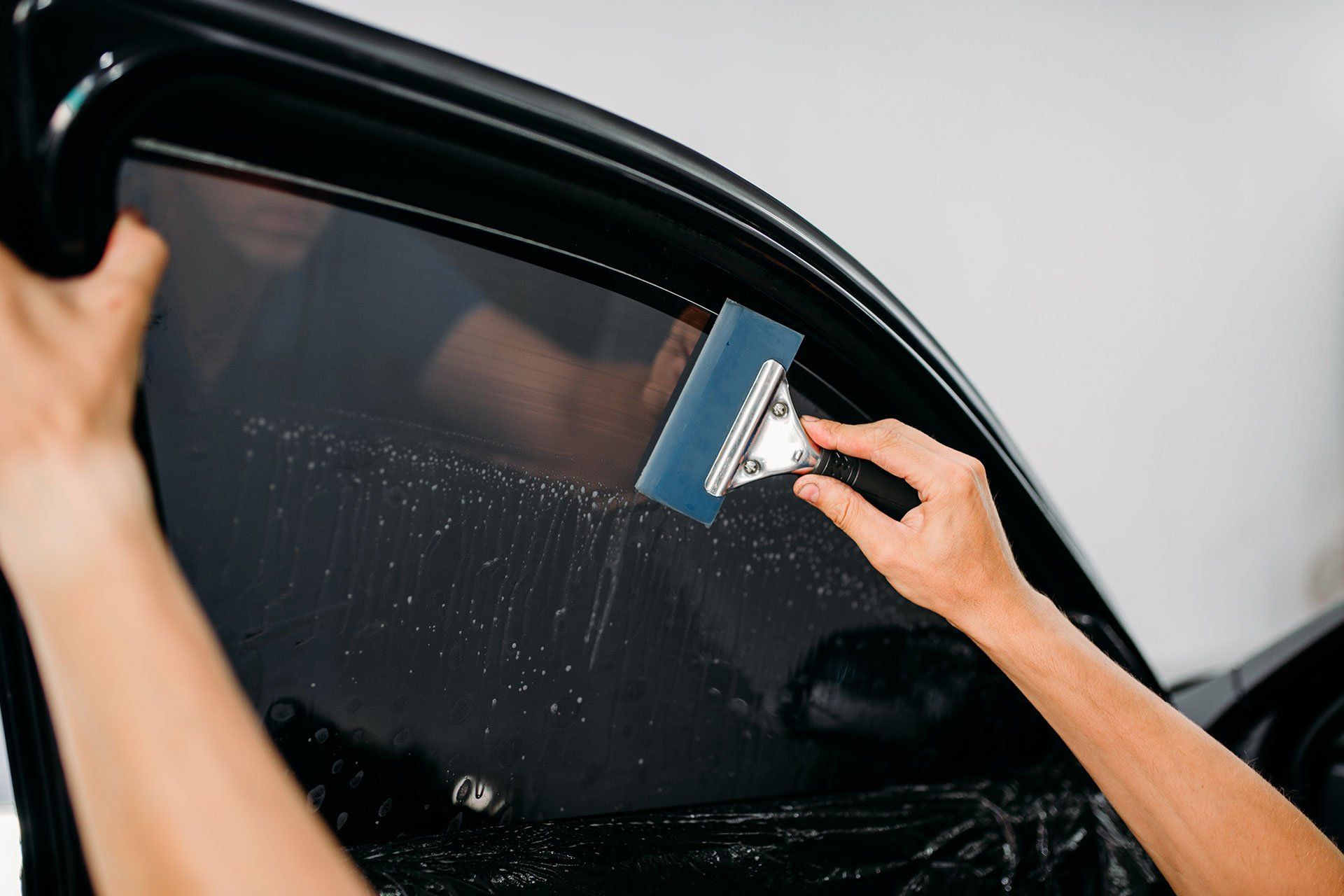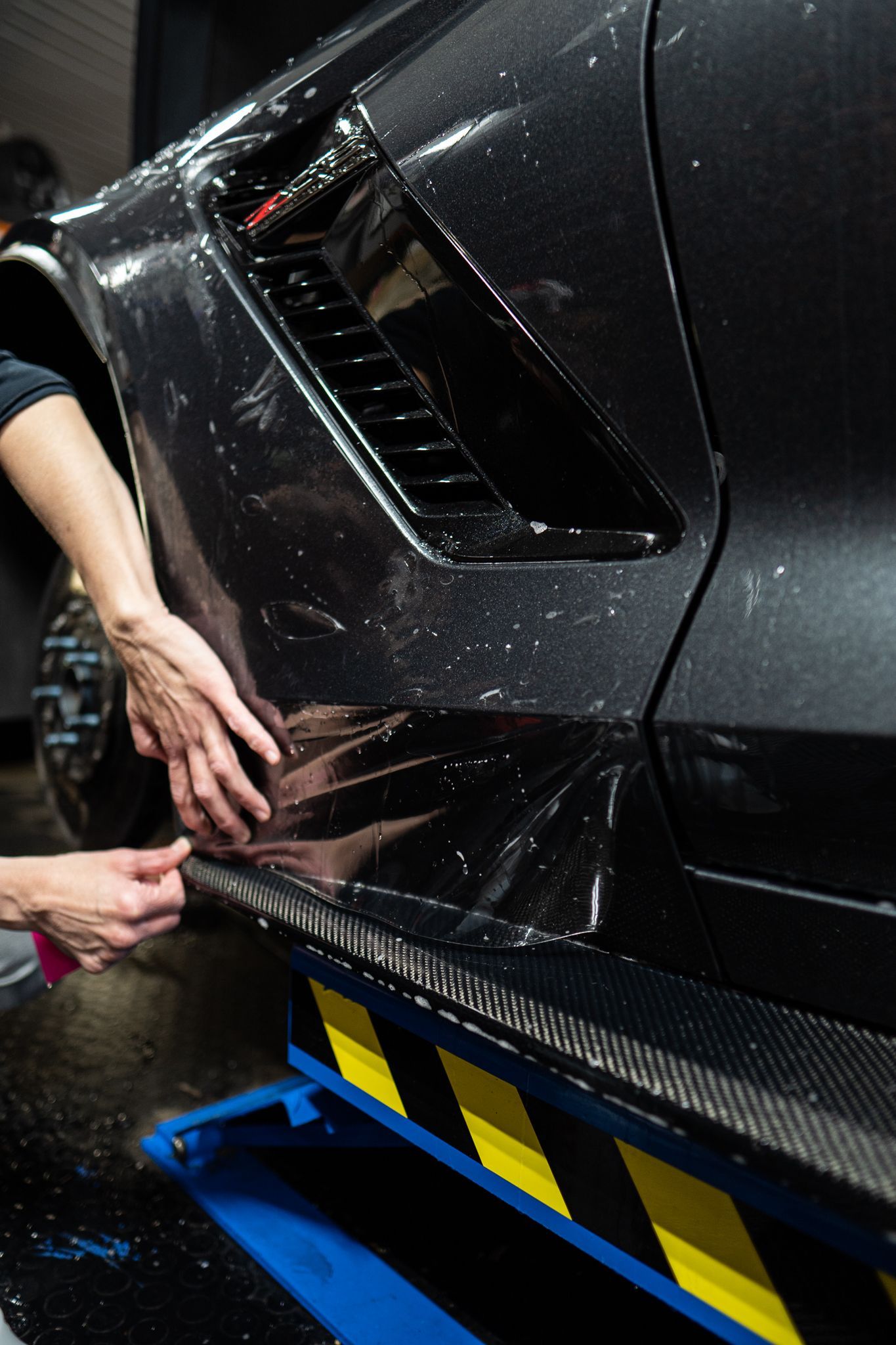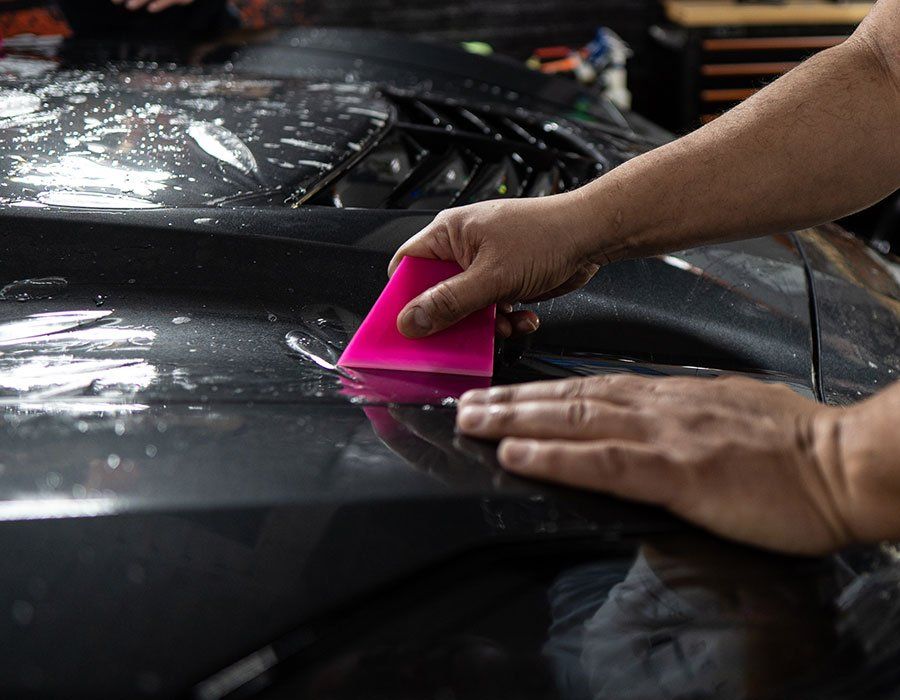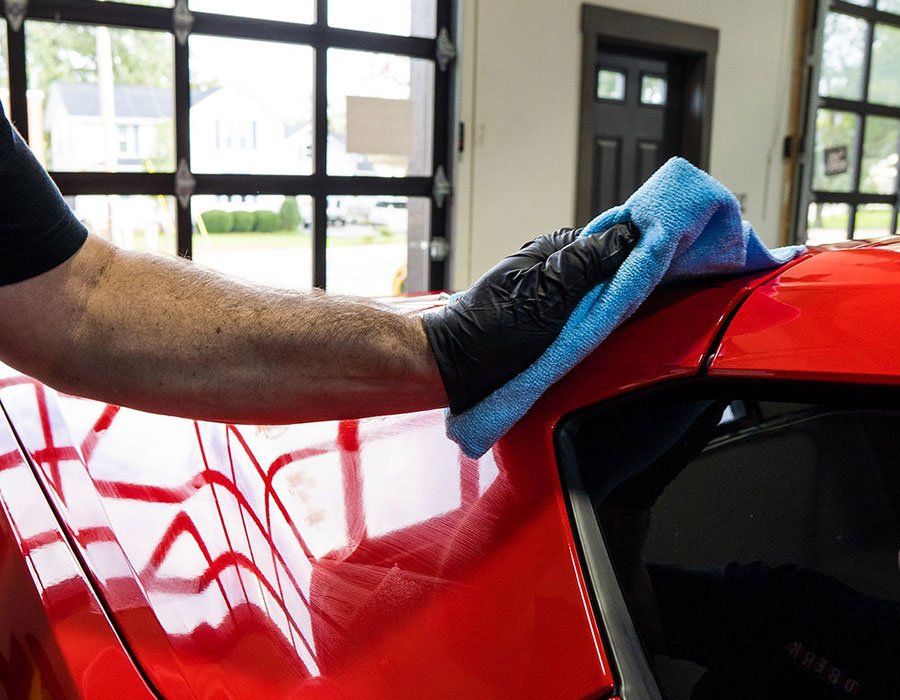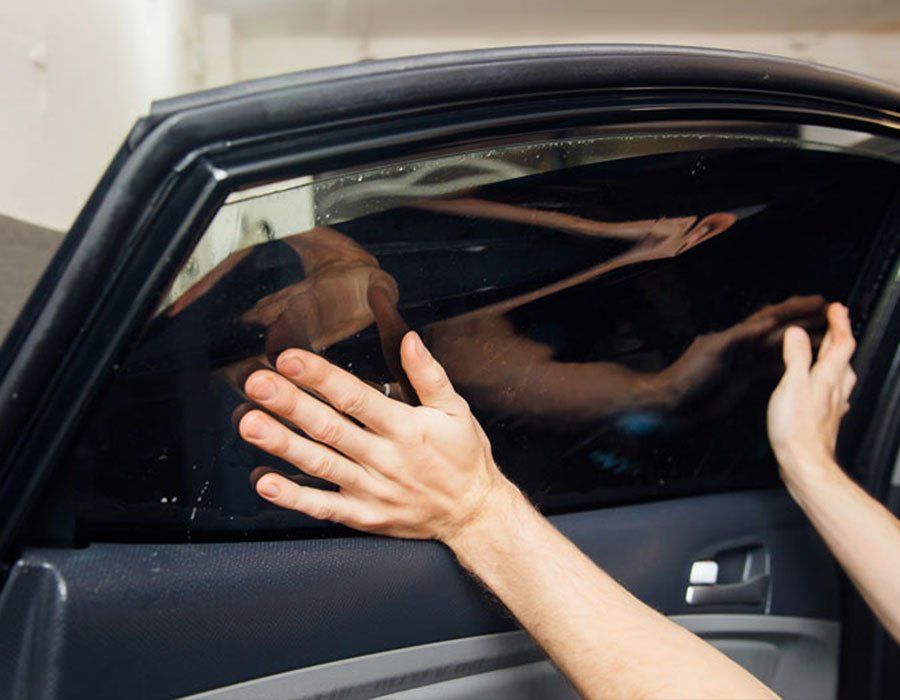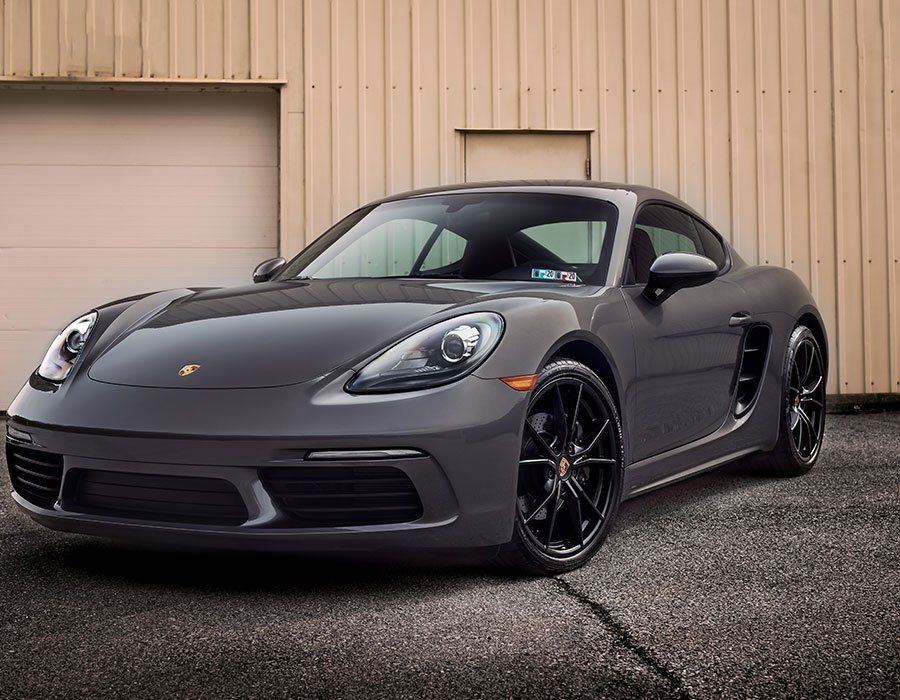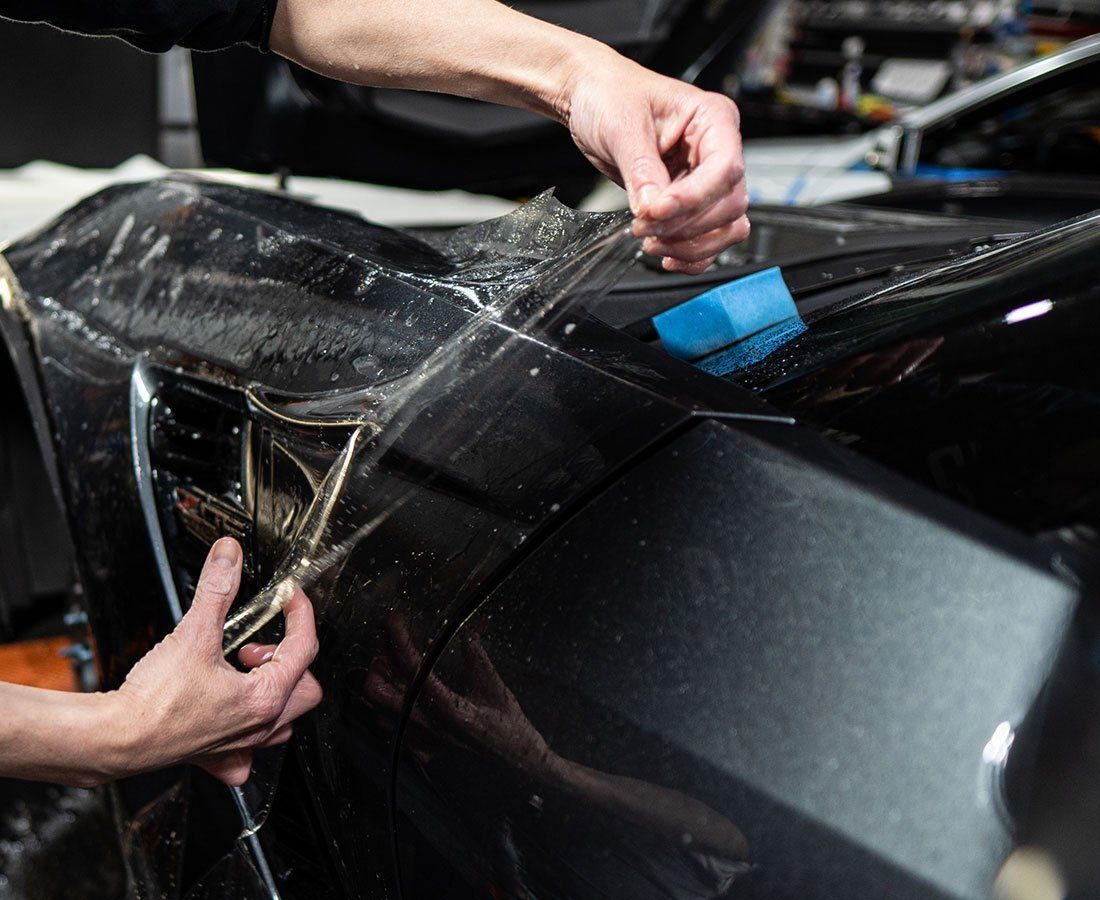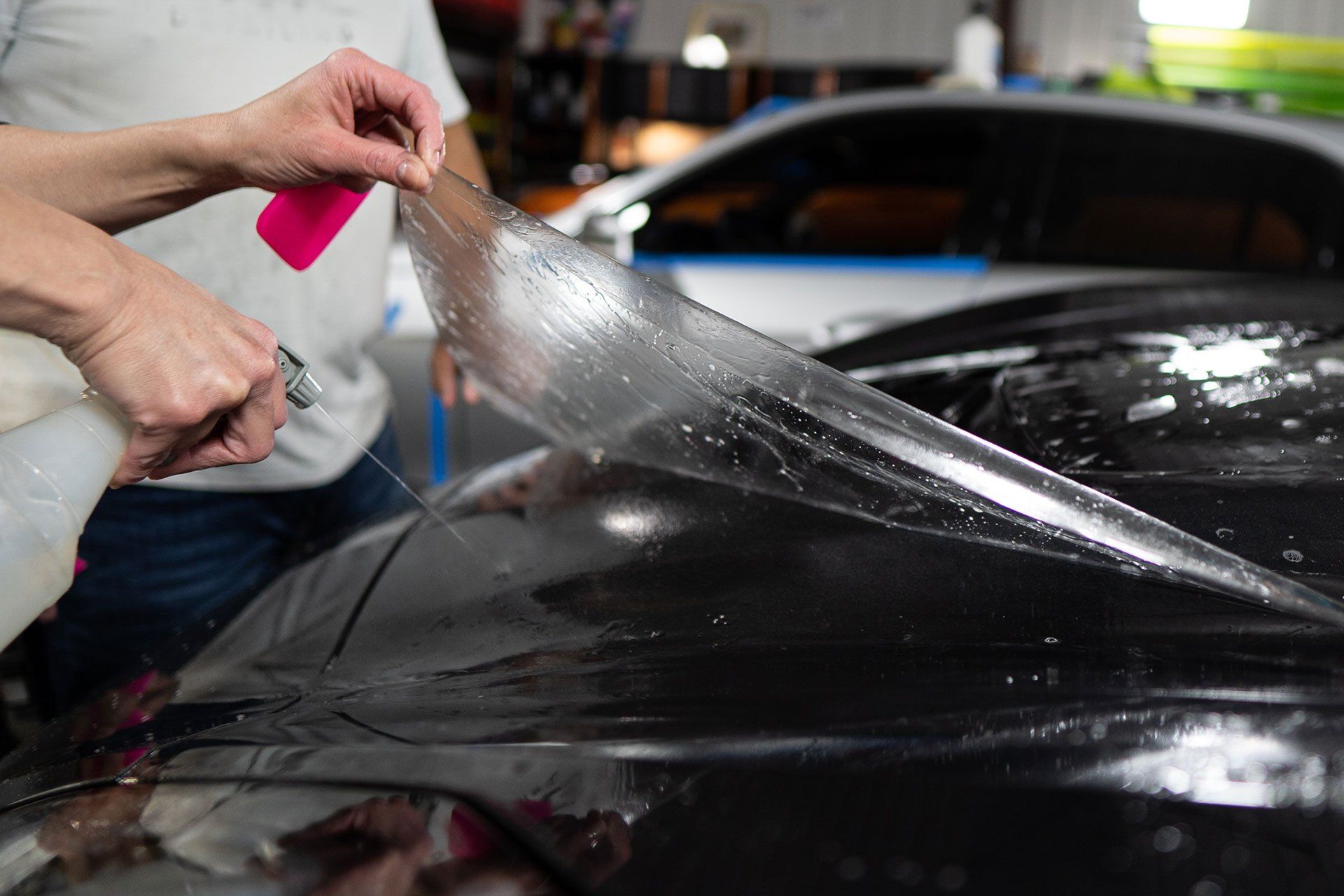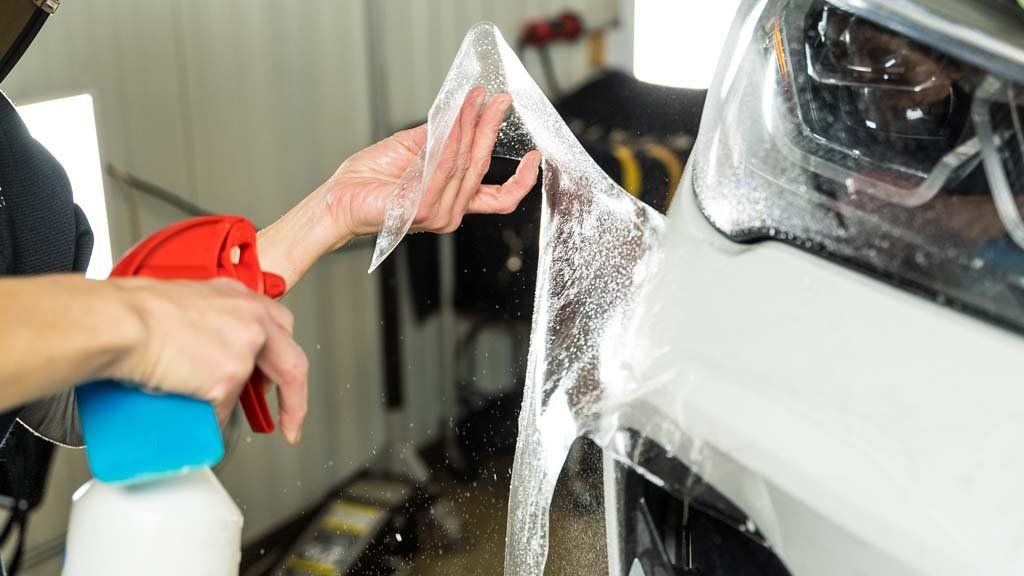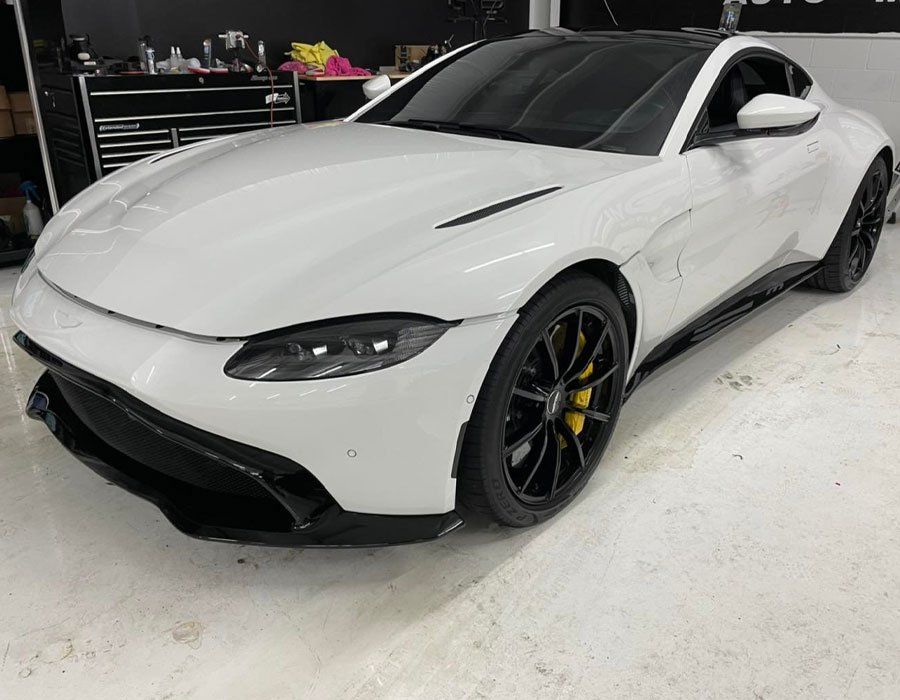Targeting Vulnerable Car Parts with PPF: The Ultimate Protection Guide
CALL (727) 940-2340
SCHEDULE NOWYour car's hood, front bumper, fenders, mirror caps, and rear bumper are very exposed. These parts endure the hardest hits from tiny rocks, dust, and even bugs while you cruise the streets. Paint Protection Film, known as PPF, is your shield against such threats. It creates a resistant barrier that keeps chips, scratches, and minor damages at arm's length. Moreover, it magically brings out a glossy shine in your car that makes it easier to brush off dirt and bugs. Now preparing for that weekend drive becomes a swift chore rather than a time-consuming task. Pulling into the driveway after a long journey can be worry-free.
Vulnerable car parts that can greatly benefit from the application of PPF include the hood, front bumper, fenders, mirror caps, and rear bumper. These areas tend to be more prone to rock chips, scratches, and other types of damage, making PPF a valuable investment in protecting your vehicle's paint.
Identifying Vulnerable Car Parts
Cars are built to withstand a lot, from rain and snow to the harsh rays of the sun. But even the toughest cars have their weak spots. Understanding which parts are most susceptible to damage is crucial to ensuring comprehensive protection for your vehicle. These vulnerable areas, including the hood, front bumper, fenders, mirror caps, and rear bumper, are constantly at risk of getting hit by road debris, stones, bugs, and other environmental hazards.
Imagine driving down the highway on a bright summer day. As you cruise along, your car's paintwork faces an onslaught of pebbles kicked up by passing vehicles or the occasional kamikaze bug crash landing on your hood. Over time, this wear and tear can lead to unsightly chips and scratches that affect the overall appearance and value of your car. The softness of the paint doesn't necessarily determine the need for PPF; rather, it's about safeguarding against potential damage that can mar your car's aesthetics.
It's not just about maintaining your car's visual appeal. Vulnerable car parts, such as the front bumper and fenders, play a critical role in protecting delicate internal components. Any damage to these areas can compromise their ability to shield the vital engine parts beneath them. When you consider these factors, it becomes clear why investing in PPF is not just a luxury but a practical necessity.
Let's take Subaru owners as an example. They've known for years how vulnerable their car's paint can be. This understanding has led many Subaru owners to invest in PPF as part of their maintenance routine. Despite reasonable doubt surrounding the cost, they're passionate advocates for its worth due to firsthand experience with the protection it provides against their cars' vulnerable paint.
Furthermore, PPF does more than protect; it enhances the shine of your car while making bug and dirt removal easier during cleaning sessions. It also helped prevent swirl marks on the paint surface over time. Such benefits go beyond mere aesthetics; they contribute to maintaining the market value of your vehicle.
Understanding the vulnerable parts of your car is imperative in determining where PPF should be applied for maximum coverage and protection. With this insight, you can make informed decisions about enhancing your car's longevity and preserving its flawless appearance.
Moving ahead, we'll explore the numerous advantages of deploying PPF on vulnerable car parts to further understand its significance in safeguarding your vehicle.
Advantages of Deploying PPF on Vulnerable Parts
Paint Protection Film (PPF) isn't just a luxury add-on for your vehicle; it's a crucial investment in maintaining its appearance and value. By acting as a shield against road debris, PPF offers unrivaled protection against chips, scratches, and other damage that can occur during everyday driving.
Imagine your car gliding down the highway, the sun casting a warm glow on its sleek surface. Now picture that same beauty being marred by unsightly chips and scratches caused by gravel or stones flung up from the road. Here's where PPF steps in as the unsung hero, taking on the role of protector for your car's vulnerable areas such as the hood, front bumper, fenders, mirror caps, and rear bumper.
Statistics: The average cost of PPF installation for a mid-sized car ranges from $1,500 to $2,500 and can reduce paint chips and scratches by up to 90%.
But protection isn't the only advantage PPF brings to the table. It also enhances the overall shine of your car, making bug and dirt removal much easier. Picture cruising down a dirt road or braving a swarm of insects on a long drive—PPF makes cleaning off these obstacles a breeze. Furthermore, when it comes time to wash and dry your car, the presence of PPF drastically reduces the risk of swirls and abrasions that can result from cleaning the paint directly. This not only simplifies maintenance but also ensures that your car maintains that showroom shine for years to come.
Is the Investment in PPF Kits justifiable?
Let's explore this important question. Is the investment in PPF kits justifiable? This depends on various factors, such as your driving habits, the condition of your local roads, and your budget.
If you drive your car daily and encounter a lot of road debris, particularly on highways or streets under construction, then the investment in PPF kits may potentially save you from costly paint repairs. It acts like armor against rock chips, scratches, and other damage caused by everyday driving. On the other hand, if you only use your car for short commutes in areas with well-maintained roads, the need for PPF may be less pressing.
Additionally, individual priorities play a significant role. Some people prioritize maintaining their car's pristine appearance and are willing to invest in protective measures like PPF to keep their car looking new for longer. Others may place a greater emphasis on cost-effectiveness and opt for alternative protective measures such as ceramic coatings or regular waxing.
Consider a scenario where you live in an area where harsh weather conditions lead to an increase in damage to your car. In this case, the investment in PPF kits becomes more justifiable due to their ability to withstand harsh environmental elements and protect your car's paint.
It's important to weigh the initial cost of PPF installation against potential future expenses. The average cost of repairing a single paint chip can be around $200, while repainting a car panel can cost approximately $500. With PPF reducing paint damage by 80%, its value becomes clearer when considering these potential repair costs.
Furthermore, the longevity of PPF should factor into your decision-making process. The average lifespan of PPF is around 5 years, providing long-term protection that can offset its initial cost over time.
Ultimately, whether the investment in PPF kits is justifiable depends on your unique circumstances and preferences. It's important to consider the potential cost savings in future repairs as well as the daily protection it offers for your vehicle's vulnerable areas.
Guide to Installing PPF on Vulnerable Parts
Applying Paint Protection Film (PPF) may seem daunting, but with attention to detail and patience, you can ensure a seamless and effective installation. Here's a step-by-step guide to help you through the process.
- Ensure a Clean Surface: Before applying PPF, it's crucial to thoroughly clean the vulnerable car parts. This is to ensure that the surface is completely free from any dirt, dust, or particles that could prevent proper adhesion. Any debris left behind may cause bumps or bubbles under the film, affecting its effectiveness. It's important to use a gentle detergent to remove any existing wax or polish. A surface that's clean and smooth will provide the ideal foundation for the PPF application.
- Precision Cutting: Once the surface is clean, the next step is to cut the PPF to fit the specific contours of the vulnerable car parts. This requires precision and attention to detail to ensure a snug and seamless fit. Utilizing computer-aided design templates can assist in accurately cutting the film to match the curves and lines of your car parts. This ensures that the PPF provides comprehensive protection without leaving any vulnerable areas exposed.
- Air Bubble Removal: After carefully placing the PPF on the car part, air bubbles may form underneath. To eliminate these bubbles and achieve a smooth finish, use a squeegee to gently press the film onto the surface while pushing out the trapped air. It's important to work gradually from the center outward to avoid trapping additional air as you go along. This step helps in ensuring a wrinkle-free installation that doesn't compromise the appearance or protective properties of the film.
- Heat Application: To further enhance the seamless finish of the PPF, applying heat becomes crucial. Heating the film helps it conform perfectly to the shape of the car part, ensuring that there are no wrinkles or creases. The application of heat softens the film, allowing it to adhere more effectively and settle into every contour of the car part. Using a heat gun or infrared heat lamp with controlled temperature settings can aid in achieving this seamless finish.
Think of applying PPF like wrapping a gift—each step requires precision and care to ensure that it fits well and looks flawless when it's all wrapped up.
By following these meticulous steps for installing PPF on vulnerable car parts, you can ensure maximum protection for your vehicle while maintaining its aesthetic appeal with an expertly applied paint protection film.
PPF Maintenance and Removal
Once paint protection film (PPF) is installed on your car's vulnerable parts, it's crucial to maintain it properly for long-lasting protection. Regular maintenance involves taking care of the film to ensure it continues to offer optimal defense against rock chips and other forms of damage.
Cleaning Routine: It's important to use non-abrasive cleaning agents to avoid damaging the film. Mild car washing soap and water with a gentle microfiber cloth are suitable for this purpose. Harsh brushes or abrasive sponges can compromise the integrity of the film.
Removing Damaged PPF: Despite proper maintenance, PPF may still become damaged over time, especially if it encounters severe impacts or prolonged exposure to the elements. When this happens, prompt replacement is necessary to maintain the continuous protection it provides.
It's advisable to seek professional assistance for the removal and replacement of damaged PPF. The average cost of professional PPF removal falls within the range of $500, with a time frame of 4-6 hours required for the process.
Consider a scenario where the PPF on your vehicle's hood has sustained damage from loose gravel while driving on gravel roads. In such a case, immediate inspection and potential replacement of the damaged PPF are crucial to prevent further harm to the underlying paint.
Protective Coating: For added longevity, consider applying a protective coating over the PPF. These coatings enhance its durability and resilience, prolonging its effectiveness in safeguarding your car's vulnerable parts.
Remember, proper maintenance not only preserves the protective capabilities of PPF but also ensures that your vehicle maintains its pristine appearance for years to come. By adhering to a regular maintenance routine and promptly addressing any damage, you can maximize the benefits provided by paint protection film.
Other Techniques for Protecting Your Car
Your car is your pride and joy, so keeping it in top condition is always a priority. Aside from Paint Protection Film (PPF), there are additional strategies to consider when aiming to preserve your vehicle's appearance and structural integrity. These techniques promote the longevity of your car while enhancing its overall visual appeal.
Regular Washing and Waxing
Regular washing and waxing are vital for maintaining the paint's integrity. Dust and dirt can accumulate on the surface, leading to micro-abrasions that slowly erode the outer layer. By washing your car every week or two and applying a fresh layer of wax every couple of months, you shield the paint from damage caused by environmental pollutants, UV rays, and everyday wear and tear.
Ceramic Coatings
For an added layer of protection, ceramic coatings are an excellent option. Ceramic coatings provide an exceptionally durable, strong barrier against environmental elements like bird droppings, tree sap, and acid rain. They also offer hydrophobic properties, repelling water and making it easier to wash away dirt and grime. Many car owners swear by the effectiveness of ceramic coatings in keeping their cars looking glossy and new.
Parking Considerations
Where you park your car plays a key role in its preservation. Parking in shaded areas can help shield your vehicle from harsh sunlight, preventing paint oxidation and interior damage. If parking indoors or under shelter isn't feasible, using a car cover can provide necessary protection against the elements.
Moreover, regular inspections are crucial for identifying minor scratches and chips early on. Touching up these imperfections promptly helps prevent corrosion and ensures that your car maintains its flawless appearance over time. By integrating these protective measures into your regular car care routine, you not only safeguard your investment but also ensure that your vehicle remains in pristine condition for years to come.
Incorporating multiple layers of protection for your vehicle not only preserves its beauty and structural integrity but also adds to its value over time. Taking proactive steps towards car maintenance pays off in the long run.
Premier Paint Protection Film Installers in Tampa, FL
For top-tier paint protection film installation services in Tampa, FL, Auto Film Guys stands out as the premier choice. With a reputation for excellence and precision, our team of expert installers ensures that your vehicle receives the utmost care and protection against rock chips, scratches, and other road hazards. Using high-quality materials and industry-leading techniques, we tailor each installation to your vehicle's specific needs, providing a seamless and durable barrier that keeps your paint looking flawless for years to come. Trust Auto Film Guys to safeguard your investment and maintain your vehicle's pristine appearance. Contact us today to schedule your appointment and experience the unparalleled quality of our paint protection film installations.
The Auto Film Guys Blog
